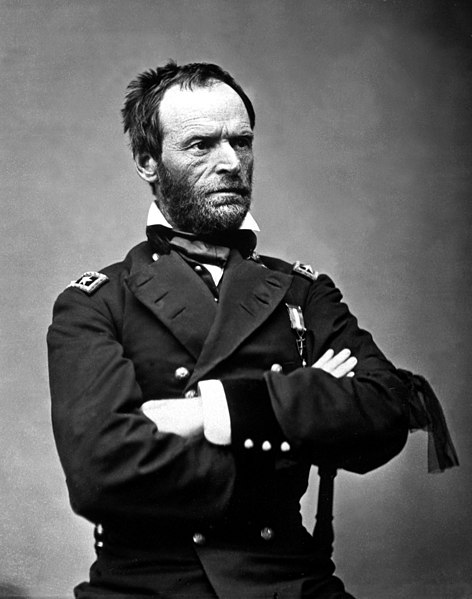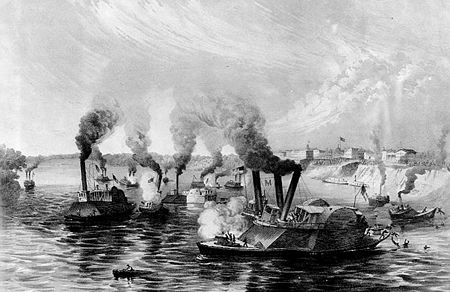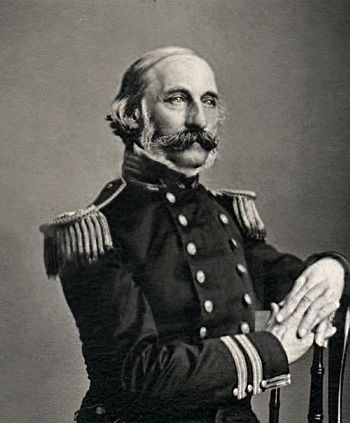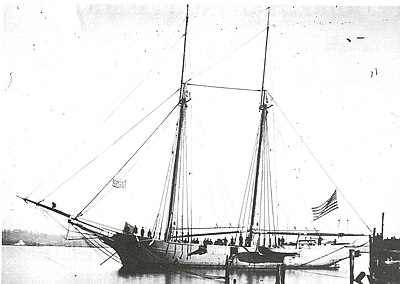 |
| Vicksburg |
Abandoning charges on the works, the Federals began a conventional siege. As Grant said, “I now determined upon a regular siege—to “out-camp the enemy,” as it were, and to incur no more losses.” The Yankees dug their entrenchments closer and closer to the Confederate works spread out along the bluffs along the Mississippi River. The rebels were completely surrounded, and they could expect no supplies to arrive. Their stores were very low. They had a good amount of ammunition, but not enough food. They soldiers and civilians ate anything they could find. Mules, cats and dogs began to disappear, some men even tried to eat their leather shoes. But it wasn't enough. Before long the symptoms of malnutrition and starvation began to show themselves. By the end of June half of the Confederate soldiers were unfit for duty. One southerner wrote:
It seems wonderful that human endurance could withstand the accumulated horrors of the situation. Living on this slender allowance, fighting all day in the hot summer's sun, and at night, with pick-axe and spade, repairing the destroyed portions of the line, it passed all comprehension how men endured the trying ordeal.The Union didn't sit passively waiting for the Confederates to surrender. They dug mines to try to blow up the Confederate works. They also kept up a bombardment on the town from their entrenchments as well as the gunboats in the river. Their shelling of the town destroyed many buildings, forcing civilians to take refuge in caves dug into the bluffs.
The Confederate government did all it could to relieve Vicksburg. Kirby Smith in the Trans-Mississippi was ordered to try to strike Grant's supply lines. One reason behind Lee's invasion that would culminate in the Battle of Gettysburg was the hope that it might convince the Federals to abandon the siege. Joseph E. Johnston was given the responsibility to try to raise the siege by force. He was forming an army that was to try to strike Grant's rear. But he believed that his forces were weak. He suggested that Pemberton try to break out and abandon the city so that they could unite their armies. But with the strong works encircling Vicksburg, that would be impossible. The Confederate government ordered Johnston to try to relieve the town no matter the odds. James Seddon, Secretary of War, wrote him:
Vicksburg must not be lost without a desperate struggle. The interest and honor of the Confederacy forbid it. I rely on you still to avert the loss. If better resources do not offer, you must hazard attack. It may be made in concert with the garrison, if practicable, but otherwise, without-by day or night, as you think best.But Johnston disobeyed these orders, and made no serious attempt to relieve the city before the end came.
On July 3rd, his men starving, too weak to try a breakout and with no hope of relief, Pemberton sent a message to Grant asking for terms of surrender. Grant replied, as he had at Fort Donelson, that he would accept only unconditional surrender. But Pemberton refused. The Confederates had cracked the code used by the Federal troops to send messages between the gunboats and the land forces. They had read their messages that said that they would have to parole all the Confederate troops because they didn't have the transportation to take them north. Grant relented, and the surrender was finalized on July 4th, independence day. During the siege the Federals had 4,835, the Confederates 3,202, as well as 29,495 captured.
 |
| Port Hudson |




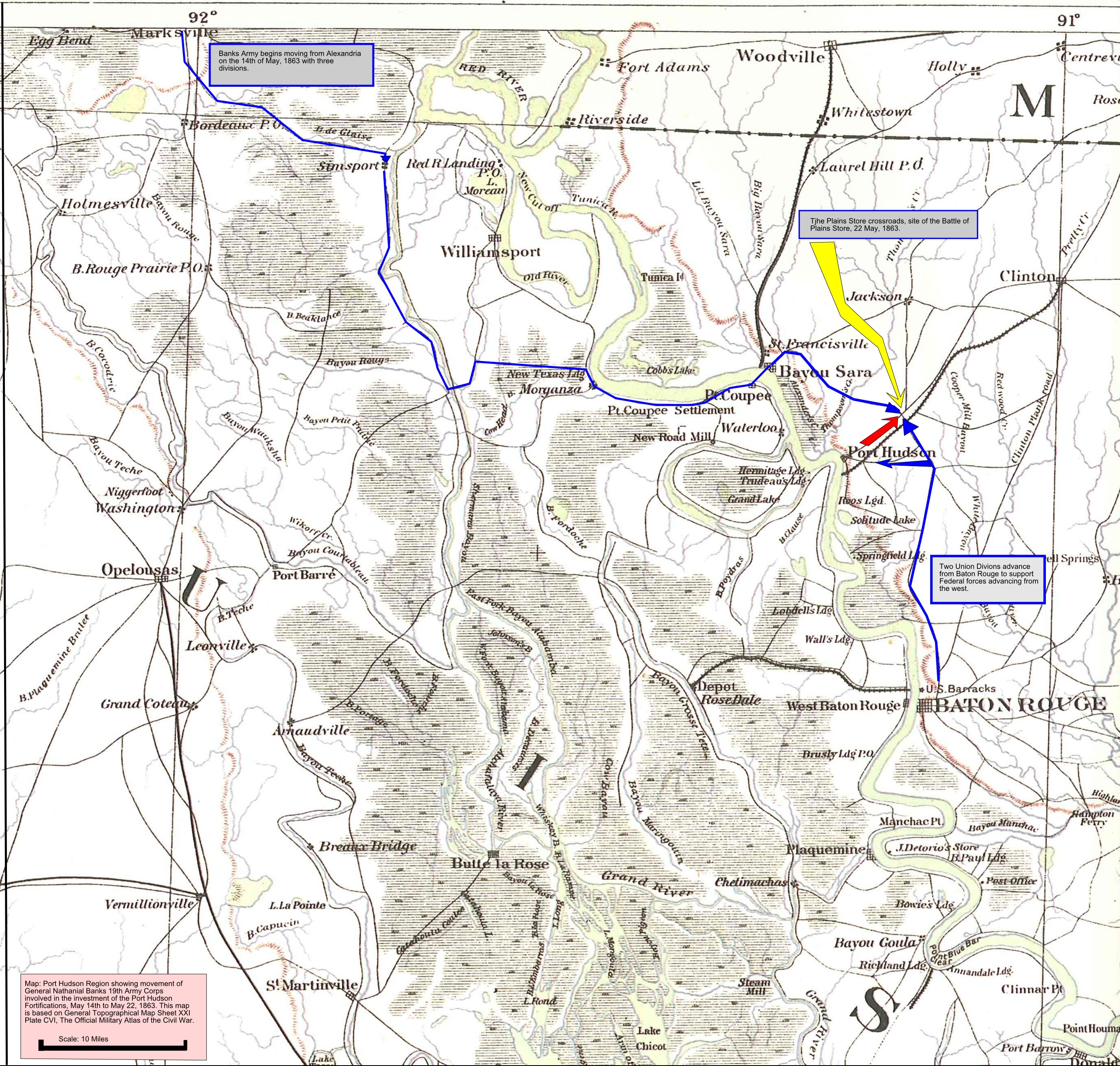

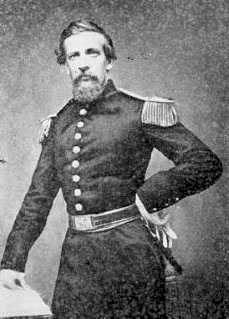





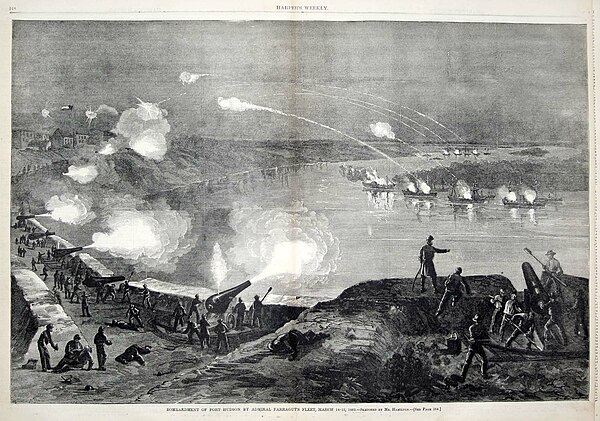


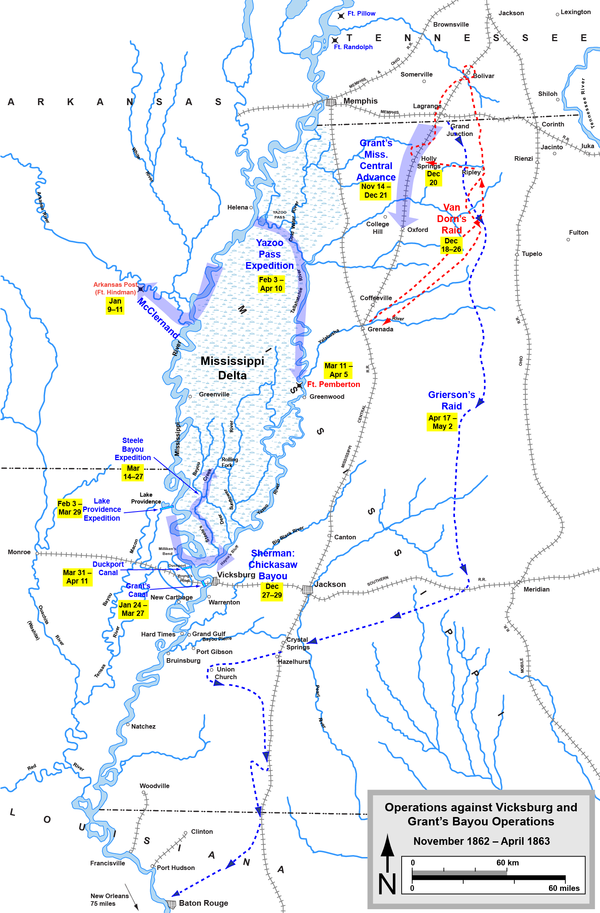
_watercolor.jpg)





